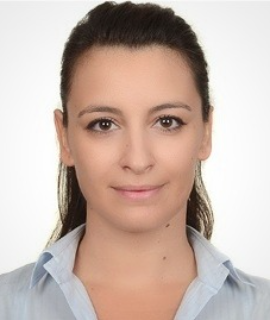Title : Wound healing mats made of layer by layer coated nanoparticles and electrospun nanofibers
Abstract:
Introduction: A broad range of diseases could be altered using layer-by-layer (LbL) based nanoparticles which is an emerging and powerful method to develop multifunctional nanomedicines. In this study, a combined formulation was achieved with LbL coating of silver nanospheres using melatonin, a pineal gland hormone with anti-inflammatory and immunomodulatory effects, between the layers. Electrospun nanofiber mats were prepared with melatonin loaded LbL nanoparticles for wound healing applications.
Methods: Lipoic acid functionalized silver nanospheres (AgNS) (796182 Sigma-Aldrich) were used as core material. 5 mg/mL melatonin was prepared with 500 µM polyethylenimine (PEI) in water to form a polycation layer. Previous studies shown that, MEL has a very low solubility in water. 5% Tween 80 was included in polycation solution to enhance the solubility. Silver nanospheres were mixed with polycation solution and then polyanion solution composed of 500 µM dextran sulfate (DXS) in water added and mixed thoroughly. After each step, particle size, polydispersity index and zeta potential were monitored with Zetasizer (Nano ZS, Malvern Instruments, Malvern, UK). 1 g of polyvinyl alcohol (PVA) was mixed with 10 mL nanoparticle dispersion for 16h at room temperature. Electrospinnner (Ne200 NanoSpinner, Inovenso Turkey) was used for fabrication of nanofiber mats. Characterization studies were evaluated with a rheometer (HR-1 Discovery Hybrid Rheometer with Smart Swap™ 40 mm Peltier Plate geometry) and a conductivity meter (SevenCompact™ Mettler Toledo) to characterize the formulation in terms of viscosity and conductivity. Nanoparticle-PVA dispersion was pumped through a custom nozzle with a 0.8 mm die at 0.3 mL/h flow rate under 15 kV voltage. A flat collector with 15 cm distance from the nozzle was used to collect the nanofiber mat. Optical microscope was used for preliminary imaging studies of the fiber morphology.
Results: AgNS/PEI-MEL/DXS layer by layer nanoparticles with a final particle size of 55 nm and polydispersity index of 0.329 was prepared successfully. The zeta potential was found -25 mV conforming the final coating with DXS. Prior imaging studies showed that electrospinning process was successful and resulted with uniform and straight fibers.
Conclusion/Implications: The studies can be considered as a combination of electrospinning and LbL coating processes which may enable combination of different APIs and release profiles. In addition, electrospun nanofibers prepared with melatonin loaded silver nanospheres could be a promising candidate for the wound healing applications.
Acknowledgment: This work was supported by The Scientific and Technological Research Council of Turkey-TÜB?TAK (Project number: 117S213).



